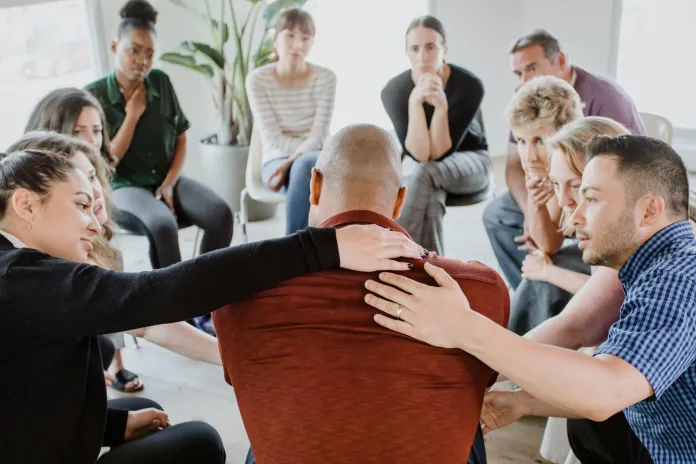Resilience and vulnerability are often regarded as polar opposites, and in that paradigm, one appears good to have and the other should be avoided. However, as we navigate life at a time when it seems there’s an endless, rolling bombardment of big shocks, both resilience and vulnerability are being redefined.
The capacity to ‘tough it out’ during a challenging time, only works on a short-term basis. Toughing it out for too long leads to collapse, such as burn-out or overwhelm; requiring even more effort and energy to recover. Gabi Lowe, co-founder of The Resilience Factory says, “This is why we’ve coined the term ‘Authentic Resilience’ to re-examine what we mean by resilience, and bust the myths that it is a fixed, strong, hard, go-it-alone quality. For resilience to be sustainable, and therefore, authentic, there needs to be flexibility and adaptiveness; there needs to be heightened awareness and perceptiveness so that you know when and how to reach out for a helping hand. Authentic Resilience means that you don’t just survive a trauma or a difficulty in life, but that you know how to thrive in it and through it. As we look at new and better conceptions of resilience; we then also start to see vulnerability in a new light. Instead of opposites, we see convergences.”
Why vulnerability is not a weakness
The dominant and pervasive view of vulnerability is that it’s shameful or weak, and therefore needs to be hidden and avoided. Researcher and author, Dr Brené Brown has tackled the topic in her popular books and in TED Talks that have been watched by millions of people around the world. She’s famous for saying: “There’s no courage without vulnerability”. Pippa Shaper, also a co-founder of The Resilience Factory says, “We build on Brown’s seminal work on vulnerability in our workshops and training courses, where we explain: ‘There’s no authentic resilience without embracing and understanding your vulnerability’. Many believe that resilience is all about pushing through challenges – just keeping on going, no matter what. What we know, however, is that to build Authentic Resilience – the kind that lasts a lifetime and will see you through any situation – there is a real need to face up to, own and process your vulnerabilities. Your most vulnerable areas hold key information that can help you deal with and overcome your darkest fears. As uncomfortable as it is, having the courage to sit with our most difficult and challenging emotions is precisely what grows and deepens our capacity for Authentic Resilience.”
Is vulnerability especially challenging for South Africans?
Many South Africans from all walks of life take a certain pride in our toughness in the face of adversities. Lowe says, “It’s true that as South Africans we are a robust nation and we do seem to have an inbuilt ability to get through, and often even be creative and inventive in difficult circumstances. However, just toughing it out comes at a huge cost and no one can sustain that on an ongoing basis. What we see in South Africa are high rates of widespread mental health issues, post-traumatic stress and substance abuse disorders, which can all be indicators that we are actually not coping well with the pressures and challenges that we face. These can all be signs of low levels of Authentic Resilience which goes beyond surviving hard times, to look at how we can thrive through them. This is a motivation to grapple with our vulnerability and discover the power in taking a good look at hard truths, taking risks and being able to bare emotional exposure. In the quest for Authentic Resilience, we learn how to reckon with vulnerability, however it’s only one important aspect of the process. We also have to develop our capacities to self-regulate and co-regulate. To think creatively under stress and develop regular self-reflection practices. We also §have to be able to identify when we need to reach out for help before we head into burn-out and how to maintain self-care while we are going through a crisis.”
Are women better at vulnerability than men?
“There does seem to be a difference between men and women when it comes to vulnerability,” says Shaper. “That said, whenever we ask the question at our workshops, ‘who enjoys being vulnerable?’, there really isn’t a difference – very few people enjoy vulnerability, women are probably just more used to it. Whilst women are often thought of as being more vulnerable, this is not necessarily so. It might be physically more obvious, but emotionally women are often more used to facing up to their vulnerability and better equipped to talk about and process their emotions, which our research has shown to be a vital part of being highly resilient. Men who do get in touch with their own vulnerability can discover and experience profound changes in many areas of their life, including becoming more emotionally resourceful and resilient. What’s important is that anyone can learn and develop their capacities to process their vulnerabilities and be authentically resilient.”
Lowe and Shaper’s top tips for processing vulnerability
- Start with embracing the fact that vulnerability isn’t weakness – it takes enormous strength and courage to face your vulnerability, to allow it and to own it as part of who you are. You are not alone, everyone experiences vulnerability.
- You also don’t have to overshare personal information in order to be vulnerable – these are most definitely notthe same things.
- Know that vulnerability is going to feel different for everyone, and what might feel vulnerable for one person might not for another.
- Next time you feel vulnerable try expressing it, either to yourself by way of journaling or share your feelings and fears with someone you trust. Tell someone how you feel, a professional if needs be. Coaching, counselling and therapy are all superb tools for processing emotions.
- Instead of leaning out and turning away from your difficult emotions, lean into them. Examine them, observe them without judgement, be curious about them and use them as a way to discover more about yourself, it will help you become more resourceful.
- Lastly, remember that whatever you leave in the dark festers. You empower yourself when you shine the light onto the areas you are scared of.
Lowe concludes, “Madiba said: ‘I learned that courage is not the absence of fear, but the triumph over it.’ This is such a meaningful quote, and we should remember that the same applies to Authentic Resilience. Authentic Resilience is not the absence of vulnerability, it is the ability to embrace rather than brace against all areas of vulnerability so that you can address them, integrate them and navigate your way through them. It’s important to realise that the limiting ways you might think about resilience and vulnerability can make you less resilient and increase your vulnerability. So, if you are one of those people who has been thinking that resilience means toughing it out on your own, you can certainly question your thinking and understanding to become more authentically resilient in the process.”
The Resilience Factory offers unique Authentic Resilience training via one-on-one coaching; in-person and virtual masterclasses or workshops; and online study. Learn more here or email: [email protected]












